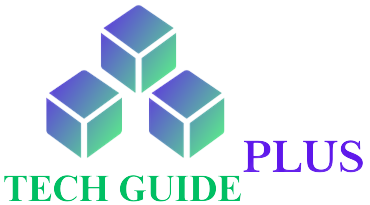A. Definition and Purpose of ATS
Applicant Tracking Systems, commonly referred to as ATS, navigate the expanse of candidate recruitment, synthesizing numerous applications and streamlining the selection framework for employers. Quintessentially, an applicant tracking system automates the sifting, sorting, and shortlisting of potential candidates, whittling down vast application pools into manageable, qualitatively selected candidates. It acts as a linchpin in modern recruitment, optimizing hiring pathways and enhancing overall recruitment efficacy.
B. Importance in Modern Recruitment
In a contemporary hiring landscape saturated with manifold applications, the ATS emerges as a pivotal tool, dovetailing technological precision with recruitment needs. Its capacity to seamlessly traverse through heaps of resumes, extracting pertinent information, and aligning it with job specifications transcends mere administrative assistance. The ATS endeavors to carve out a more focused, candidate-centric approach, ensuring that talent acquisition is not just mechanized, but also strategic and data-driven.
II. Key Features of Applicant Tracking Systems
A. Automation in Recruitment
A cogent exploration into the realm of ATS unveils the profound automation it brings into the recruitment tableau. From parsing resumes and juxtaposing candidate skills against job requisites, to automated communication and interview scheduling, ATS redefines recruitment automation, embodying a symbiotic blend of technology and human resource management.
B. Candidate Management
Amidst the proliferating need for organizational alacrity, ATS brings forth robust candidate management features. It is not merely a conduit for managing applications but extends its functionality towards maintaining a candidate database, tracking their journey through the recruitment funnel, and ensuring coherent engagement throughout the recruitment process. This repository not only aids in current recruitments but also becomes a reservoir for future hiring, aligning past candidates with new opportunities.
III. Challenges and Solutions within Applicant Tracking Systems
A. Addressing Common Issues
While ATS amalgamates efficiency into recruitment, it is not devoid of challenges. Issues like impedance mismatch between candidate information and job requisites, loss of potential candidates due to system limitations, and occasional technological glitches can mar the recruitment process. These stumbling blocks necessitate an astute understanding and continuous refinement of the ATS framework.
B. Implementing Effective Solutions
Solutions enveloping ATS challenges encompass both technological advancements and strategic alterations. Employing algorithms that are adept at semantic search, enhancing user interface and experience, and ensuring an inclusive approach that does not inadvertently filter out potential candidates, are paramount. Moreover, adopting a feedback loop, which integrates learnings from past recruitments, amplifies the efficacy and accuracy of the ATS.
IV. Integration of ATS with CRM Systems
A. The Symbiosis Between ATS and CRM
The integration of ATS with Customer Relationship Management (CRM) systems unveils a multifaceted approach towards managing not only candidate relationships but also client and customer interactions. An ATS manages candidate data, while a CRM system Monday, optimizes customer and client data management, ensuring sustained interactions and relationship building. Small businesses can enhance customer relationships and boost sales by integrating an ATS and CRM for small business, allowing them to effectively manage leads, nurture client interactions, and provide personalized services.
B. Case Study: Interplay Between ATS and CRM System Monday
The entwining of ATS with CRM systems such as Monday redefines organizational data management. The case explores how Monday, widely acclaimed for its project and team management features, can seamlessly amalgamate with an ATS, ensuring an unbridled flow of data and interactions across candidates, employees, clients, and projects. Herein, ATS manages the talent acquisition lifecycle, while Monday underscores project management and client interaction, both existing in a cohesive, integrated environment.
V. Future Trends and Developments in ATS Technology
A. Upcoming Innovations
The future trajectory of ATS technology envisages a confluence of Artificial Intelligence, machine learning, and predictive analytics. These innovations are anticipated to redefine the current paradigms of ATS, curating more intuitive, predictive, and candidate-centric recruitment journeys. Future ATS systems are projected to not merely filter and select candidates but to predict candidate success and cultural fit within organizations.
B. Impact on Businesses and Recruitment
The ripples of ATS advancements traverse beyond mere technological shifts. Businesses are poised to witness a metamorphosis in their recruitment, talent management, and overall organizational efficiency. Enhanced ATS capabilities are not merely facilitators of efficient hiring but are becoming pivotal in ensuring the confluence of organizational needs, candidate expectations, and the overarching business environment.
In light of the discussed topics, a prudent reflection on the intertwined realms of Applicant Tracking Systems (ATS) and CRM systems, especially ones as sophisticated and widely utilized as Monday, provides a nuanced perspective on modern organizational management.
In-depth Exploration of ATS Capabilities
The dynamic capabilities of ATS traverse far beyond mere applicant tracking. Engaging candidates, ensuring compliance, maintaining a database of potential candidates for future vacancies, and integrating with various hiring platforms to provide a seamless hiring experience, are all intrinsic capabilities of modern ATS. Moreover, with features such as interview scheduling, automated communication, and analytical insights, ATS is rapidly evolving from a mere administrative tool to a comprehensive recruitment management system.
An interesting facet to explore within ATS capabilities is its capability to significantly reduce time-to-hire by automating numerous recruitment facets, including job postings, candidate communication, and interview coordination. This translates into not only enhanced efficiency but also significant cost savings, providing organizations a strategic edge in talent acquisition.
Understanding Monday’s CRM Efficacy
Delving into Monday’s CRM capabilities, one encounters a holistic platform that empowers organizations to manage client relationships, projects, and workflows with profound efficiency. Monday meticulously amalgamates various facets of organizational management, providing a unified platform to manage projects, track client interactions, and enhance collaborative efforts within teams.
When Monday’s CRM is mentioned in tandem with ATS, it paves the way for an integrative approach toward organizational management. It allows organizations to manage client and project data cohesively, while also ensuring that hiring and talent management align with organizational needs and projects. The synergy between Monday’s CRM capabilities and ATS’s recruitment management features provides organizations with a robust framework to ensure sustained growth and efficiency.
A Glimpse into the Future: The Convergence of ATS and CRM
As we peer into the future, the convergence of ATS and CRM technologies is poised to redefine organizational management paradigms. The amalgamation of recruitment, talent management, client relationship management, and project management into a unified platform is not a distant reality. Future ATS and CRM systems are expected to be more intuitive, predictive, and capable of managing complex, multi-faceted organizational data and processes.
Moreover, the advent of technologies like Artificial Intelligence (AI) and Machine Learning (ML) is set to infuse more advanced capabilities into ATS and CRM systems. From predictive analytics that can foresee candidate success and identify potential client opportunities to intuitive interfaces that streamline the user experience and enhance efficiency, the future trajectory of ATS and CRM technologies heralds a new era in organizational management and efficiency.
Conclusion: A Strategic Paradigm in Organizational Management
In conclusion, the strategic paradigm presented by the integration of ATS and CRM systems, especially with platforms like Monday, provides organizations with a comprehensive framework to manage recruitment, talent, projects, and client relationships with unprecedented efficacy. It not only augments organizational capabilities but also provides a strategic edge in navigating the complex, dynamic business environment.
Organizations that adeptly navigate through the complexities of ATS and CRM integration, ensuring data coherence, user-friendliness, and strategic alignment with organizational needs, are poised to secure a competitive advantage in talent acquisition, project management, and client relationship management. It heralds a future where technology is not merely a tool but a strategic partner, propelling organizations toward sustained growth and success.

